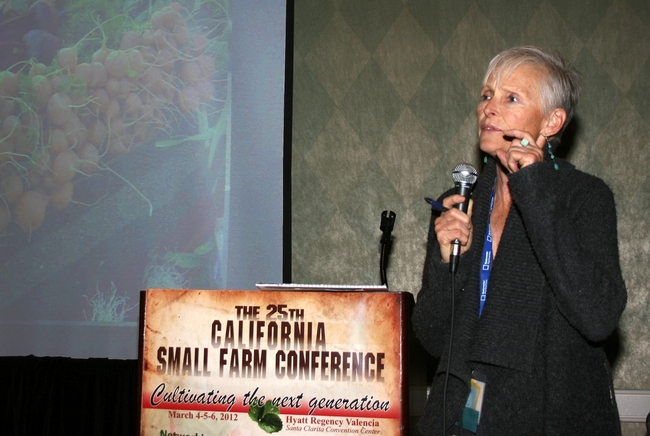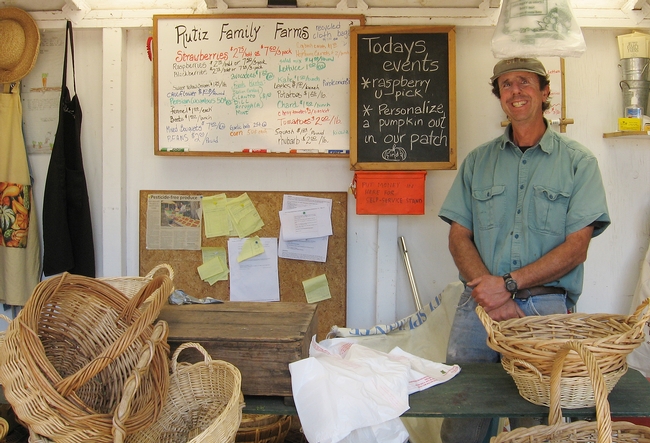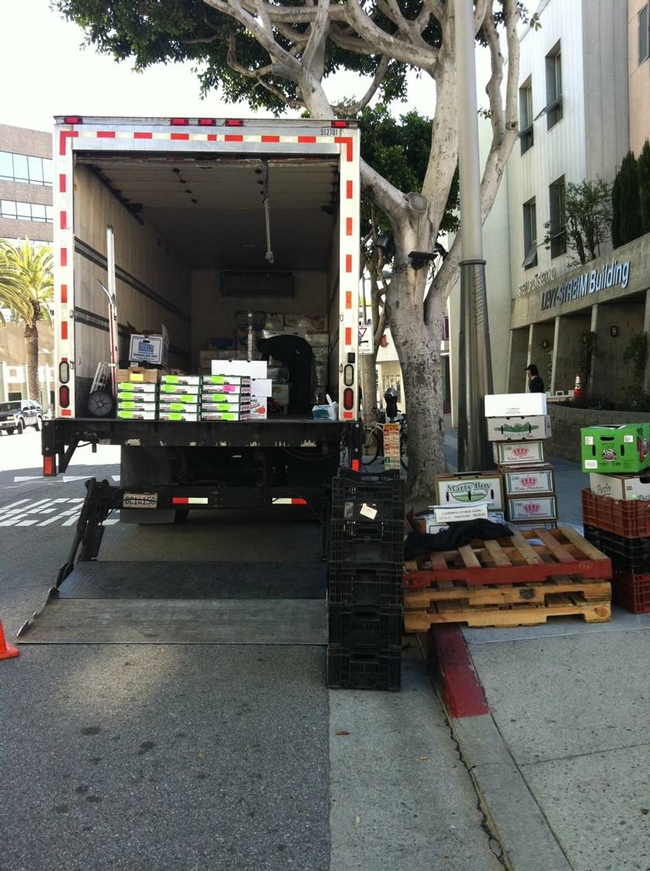Though growers can earn retail prices at farmers markets, many farmers find their profits challenged by the additional marketing costs required, such as transportation and staff time. But one farmers market has developed a way that it can help farmers sell higher volumes to multiple buyers with just one trip — by serving as a venue for sales to restaurants and wholesale distributors, in addition to individual customers.
The Santa Monica Farmers Market hosts 75-80 farmers every Wednesday and could very well be the nation's largest "wholesale farmers market." Laura Avery, farmers market manager, gave a presentation about sales to chefs and professional produce buyers at the California Small Farm Conference.

"We allowed it to progress organically," Avery said. "This happened by itself — just people doing what they want to do and getting what they want to get."
She said that a recent survey of professional produce buyers at the market found that they shop for 5-25 customers each week and have been sourcing from the market for 5-15 years. They reported average produce sales of $1,000 to $4,000 each week from the farmers market.
In one of its few concerted efforts to facilitate these sales, the market has designated parking for chefs and produce companies. Avery said some of the trucks will load up and return multiple times over the market's four hours.
A grower's perspective
Jerry Rutiz has been selling to restaurants at the Santa Monica Farmers Market for 29 years. He grows vegetables, berries and flowers on 28 acres in Arroyo Grande and also operates a CSA and farm stand.
"About 70 percent of what we bring to the farmers market is sold to restaurants," Rutiz told conference participants.

He provided some tips for farmers who want to sell to restaurants and develop relationships with chefs.
"Ask the chef what he wants or can't get," Rutiz said. "Don't expect to sell cabbage or white cauliflower to a restaurant, but if you can bring purple, orange or green cauliflower — that can differentiate you and can help differentiate their restaurant from other restaurants."
Also: "Restaurant prices have no consequence with wholesale prices of the moment," he said. "Price is not the biggest criteria, quality and consistency are."
Though Rutiz has found success with chefs, restaurant sales aren't the focus of all farmers at the Santa Monica market.
"We figure about 25 percent [of produce sold at the Wednesday market] is restaurant wholesale," Avery said. "Some farmers like Jerry sell a majority to restaurants, but some sell just to customers and not to restaurants."
Complications


"This is enterprise that takes place on the sidewalk behind the trucks, not in front of the tables where the public buys," Avery said.
Sales to distributors must adhere to wholesale size and pack regulations, though recent state legislation (AB 2168) allows chefs and restaurants to purchase exempt produce directly from farmers.
Rutiz said complications can arise if, for example, a restaurant agrees to buy all of a particular product — the same product that a traditional farmers market customer wants to buy from him.
"The trick is to cover up the produce [that's already sold] or leave it up in the truck. Or have a little stash of strawberries on the side and act like you're doing them a favor," he said.
What it means for buyers
The topic of farmers markets as a venue for wholesale produce buyers came up during another workshop at the conference as well. Karen Beverlin, vice president of specialty sales for FreshPoint, said her company buys from 28-35 farmers every Wednesday in Santa Monica.
"Farmers markets are huge for our company to meet small farmers," Beverlin said. "It's really helped us basically be an aggregator … and meet farmers who we might not have otherwise met."
As a market manager, Avery sees these additional sales at the market as another means of facilitating sales between farmers and consumers.
"The impact of the restaurants and produce companies is we have now established sales levels consistently that are as high as the highest day used to be," Avery said. "The bottom line is we're trying to get the product from the farm to the customer at a good price."
Advice for farmers market managers
For growers and market managers who are interested in developing their farmers markets as a hub for chefs and professional buyers, Avery offered these additional tips:
- Encourage your local media to do a story about a farmer and a chef who shops at the market.
- Understand from chefs which day(s) they need to shop and direct them to the closest market on that day.
- Encourage farmers to produce an availability list that they can email out to chefs on a weekly basis.
- Talk to produce companies about a restaurant that you know might be interested in farmers market produce, and encourage the produce company to drop off samples at the restaurant. This can lead to follow-up orders.
Back to the newsletter: Find more Small Farm News articles from our Vol 1. 2012 edition.